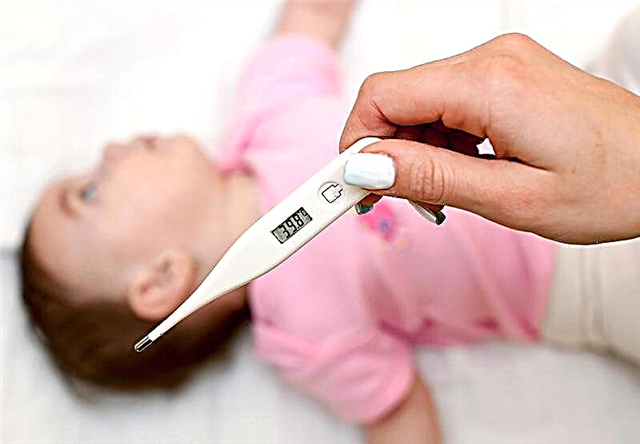
If a child has a severe sore throat and the doctor confirms that a sore throat has begun, the parents always have a question whether it is possible to cure the baby with more sparing, in comparison with medicines, folk remedies. After all, there are many recipes for gargling, you can choose the right one. To answer this question, you need to understand what angina really is. In this article we will try to figure out what folk remedies exist for the treatment of this disease, how and when to use them.

Symptoms and Signs
Not every reddened throat can be considered a sore throat. With influenza and ARVI, viruses enter the airborne droplets, and, as a rule, first of all attack the nasopharynx. A runny nose appears, the tonsils become inflamed, and it becomes difficult for the child to swallow. But this is not a sore throat, but tonsillitis. And it should be treated with antiviral drugs.

Angina, in its present understanding, is more often caused by bacteria - staphylococci and streptococci. They enter the child's body through contact with sick people, through household items, common utensils, through hands, body contact. However, the inflammation does not start immediately. For a long time, microbes can live in the nasopharynx and do not cause any harm. However, if suddenly the microclimate in the body becomes favorable for their reproduction, then streptococci will certainly take advantage of this chance.

The inflammatory process will begin if the child's immunity falls, if he is overcooled and caught a cold, experienced a stressful situation, if he is tired. Real angina begins very aggressively and unequivocally, her symptoms are vivid:
- Severe sore throat, difficulty swallowing, feeling of "lump" in the throat.
- Temperature rise to values of 38.5-39.5.
- An increase in the lymph nodes that are in the immediate vicinity of the focus of inflammation - submandibular and cervical, rarely - axillary.
- The tonsils (and sometimes the palatine arches) have a bright red color, characteristic of the onset of the disease. A little later, white, greenish, yellow and gray sores, plaque, purulent papules appear on them.
- Bad breath.
- Severe intoxication of the body - the child is lethargic, capricious, he has no appetite and has complaints of muscle and headache.

Angina can be catarrhal, follicular, purulent, herpetic, necrotic, fungal. The mildest - catarrhal, other forms of the disease are more severe, with the formation of pus, with the death of the lymphoid tissue of the tonsils and palatine arches.

What is the danger
It is better to show any sore throat to the doctor, if only for the reason that it is rather difficult to independently determine the causes of the problems. Often, exactly the same symptoms as with angina indicate diphtheria. It requires the prompt administration of a special serum, which will protect the heart, kidneys and liver from severe complications. If parents spend these precious hours and days on the treatment of non-existent sore throat at home using folk methods, then time will be wasted, and diphtheria is very likely to become complicated.
The symptoms that we described above can also be observed with infectious mononucleosis. With this viral disease, it is also important to start treatment with certain groups of drugs as soon as possible, and not gargle with soda. Otherwise, complications will affect the lymphatic system, spleen, liver.

Improper treatment of even a common catarrhal sore throat can lead to serious consequences, to disability. Therefore, self-medication with such a diagnosis is unacceptable. Only a doctor is able to determine what caused the pain and plaque in the throat, and prescribe the treatment necessary in a given situation.
The release of Dr. Komarovsky's program can be viewed in the following video, where you can find out everything about the symptoms of angina and methods of treatment.
When folk methods are indispensable
This question in relation to child sore throat can be answered briefly and succinctly - always! Without exception, all cases of angina require the use of antibiotics - quite traditional, pharmacy antimicrobial drugs. Folk remedies, of which there are a great many, can be only a small addition to the prescribed antibacterial treatment.
Important! The doctor should be aware of your intention to use alternative medicine, it is desirable that he approves them. Otherwise, angina will only progress. The catarrhal form will turn into follicular in three to five days, and that will quickly become necrotic. Overgrowth of lymphoid tissue and swelling can narrow the larynx so much that the baby suffocates.

Folk remedies
As we have already found out, as an addition to standard therapy (antibiotics + antipyretics + antiseptics + vitamins), in some situations, you can use remedies from the arsenal of traditional medicine. It is unacceptable to treat the disease only with them. It should be noted right away that folk recipes will in no way speed up recovery, but they will help reduce the intensity of pain, it will be easier for the child to swallow and talk.
Soda-salt rinses
Take a teaspoon of baking soda and salt, dissolve in a half-liter jar with boiled warm water. You can rinse your throat with this solution several times a day. The remedy does not have an analgesic effect, but to some extent it has an antiseptic effect.


Ginger
You need a small ginger root to make the gargle. It needs to be peeled, grated on a coarse grater, and poured into a ladle of boiling water (about half a liter). Within five minutes, the product must be boiled over low heat, then removed, filtered and cooled to a warm state. This rinsing will help the mucous and lymphoid tissues recover faster.

Pharmaceutical camomile
To prepare a rinse, you need a teaspoon of ready-made dry pharmaceutical raw materials and 300 grams of water. Boil water, cool to 80-90 degrees, pour chamomile into it, cover with a lid and leave for about an hour. The infusion should be filtered and stored in the refrigerator. Before rinsing it is heated, you can also add a few tablespoons of infusion to your child's tea. Chamomile is an excellent natural antiseptic and antibiotic, it will help to quickly relieve the inflammatory process in the throat.


Sea buckthorn oil
This is a tool that has a wide range of useful actions. For angina, sea buckthorn oil in the amount of a tablespoon can be added to boiled water or chamomile infusion. The resulting composition can be used to gargle. The oil has an excellent enveloping effect, it relieves pain.

Garlic with milk
Take a head of garlic, peel and chop each clove into small cubes. Mix with milk (300 ml) and bring to a boil over low heat. It is worth holding the milkshake on the stove for another 3-5 minutes, and then strain and let the child drink in small doses (1-2 tablespoons each) several times a day. Traditional healers assure that the symptoms of angina begin to recede the very next day after the start of taking such a remedy.

Aloe with honey
Quite a tasty remedy that is suitable for children who do not have a predisposition to honey allergies. Take a few aloe leaves, cut them into small cubes, put them in a glass container and cover with honey. The product should be infused in the refrigerator, tightly closed with a lid, for at least three days. During this time, aloe juice, which has a strong anti-inflammatory effect, will mix with honey. Give your child a teaspoon of sweet formula before each meal.

Calendula
To rinse with this herb, you need dried flowers, which can be bought at any pharmacy. Tincture of calendula, which contains alcohol, is not recommended for procedures in children. Dried flowers should be boiled with warm water (a tablespoon of herbs and 400 g of water), put in a water bath and held there for about 15 minutes. Then the product must be filtered and cooled to 40-50 degrees. Gargle several times a day.

The danger of self-medication
Parents who do not consider it necessary to show the child to the doctor if they suspect a sore throat risk leading the baby to disability with their own hands. Incorrect diagnosis, incorrect treatment or its absence in angina lead to serious disorders of the nervous system, brain, systemic infection, severe kidney and liver disease, heart and joints.

What not to do
- You can not do inhalations with angina. Any heating of the inflamed tonsils will enhance the reproduction of pathogens and accelerate the inflammatory process.
- For the same reason, you cannot apply warming compresses on the throat, do warming rubbing.
- You should not give your child cold drinks to drink, because against a background of high temperature this can cause vascular spasm.
- You cannot manually remove purulent plaque, ulcers and necrotic fragments from the tonsils yourself. This is fraught with the spread of infection.
- With angina, you should not soar your child's legs in hot water, do alcohol rubbing.
- No need to gargle with hydrogen peroxide, cauterize sores with brilliant green or iodine. All of these drugs should be used externally only.
- Despite the numerous advice from the Internet "guru" to treat angina with rinsing with lemon and apple cider vinegar, doctors categorically do not recommend doing this. The acidic environment only further irritates the inflamed areas, the pain intensifies, and tissue repair proceeds more slowly.

Tips
- Teach your child to gargle properly. The solutions do not need to be spit out immediately, it is desirable that your child learns to hold in the tonsil area for about 30 seconds. Then the result will be faster.
- Rinses with angina should not be too frequent. This can interfere with the regenerative processes in the tissues of the tonsils. It is better if the child gargles with broths every time after eating.
- The rinsing solution should not be hot. The best liquid temperature for the procedure is 50 degrees.
- Do not give a child with sore throat spicy and salty food, food that is too hot and cold, food with spices. It is best to feed your child with soups, mashed potatoes, broths, stews, cereals. Avoid solid food, as it can injure the already affected tissue of the tonsils.
- The baby should spend the first few days after the onset of the disease in bed.
- The child should have plenty of warm drinks. Eliminate sugary and carbonated drinks, add more tea, compote, rosehip broth to the diet.
- Ensure that your child is isolated from other children. Since sore throat is contagious, the baby needs to allocate his own separate dishes, cutlery, a towel, bed (if practiced joint sleep), toys.

If the child does not yet know how to gargle on his own, the next video can be watched with him, and, probably, the baby will quickly learn how to do it correctly.



